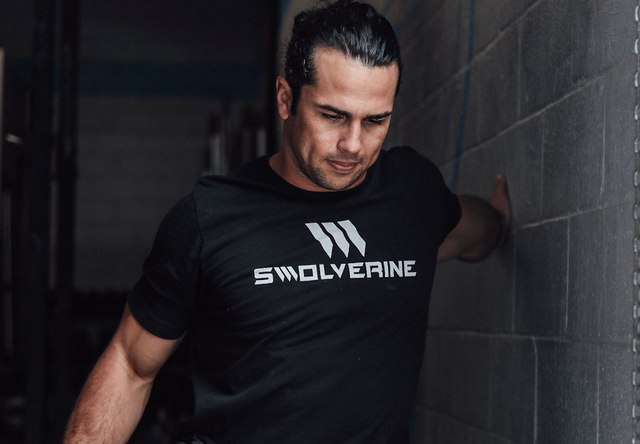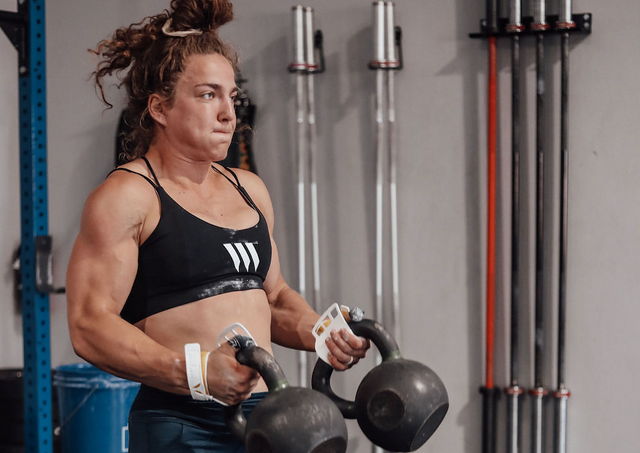BPC‑157 has quickly become one of the most popular peptides for injury recovery, gut healing, and inflammation control. Originally derived from a protein found in the stomach lining, BPC‑157 shows promising effects on everything from tendon repair to intestinal regeneration — and its use is rapidly expanding in the performance, biohacking, and longevity communities.
But as demand grows, so do the options. Today, BPC‑157 is available in multiple forms, including:
-
Injectable powders
-
Oral liquid solutions
-
Capsule-based supplements
Each form comes with unique advantages, limitations, and ideal use cases, and not all BPC‑157 products are created equal. Some are research-grade peptides used in clinical settings, while others are low-dose, supplement-style capsules with little proven efficacy.
In this guide, we’ll break down:
-
How injectables, oral, and capsule forms of BPC‑157 compare
-
Which form delivers the best bioavailability and results
-
How to choose the right format for gut health, muscle recovery, or injury repair
For a complete breakdown of how BPC‑157 works, see our companion article:
What Is BPC‑157?
What Is BPC-157?
BPC-157, short for Body Protection Compound-157, is a synthetic peptide made up of 15 amino acids. It was originally derived from a protective protein found in the human stomach. Unlike many performance or recovery compounds that are completely foreign to the body, BPC-157 is modeled after a naturally occurring fragment of gastric juice, which is partly why it has drawn so much attention in both research and athletic communities.
Key Characteristics of BPC-157
→ Peptide Structure: A short chain of amino acids (pentadecapeptide) designed to mimic and amplify the biological activity of the natural protein it’s derived from.
→ Biological Role: Primarily studied for its role in healing and regeneration, especially in tissues like muscles, tendons, and the gastrointestinal tract.
→ Mechanism of Action: Research suggests it promotes angiogenesis (new blood vessel formation), collagen synthesis, and cellular signaling pathways that accelerate recovery.
→ Stability: Unlike many peptides that break down quickly, BPC-157 is notable for its stability in human gastric juice, meaning it may be effective orally as well as through injection.
Why It’s Popular
BPC-157 has been explored for its potential benefits in:
→ Tendon and ligament repair – speeding up healing times after injury.
→ Muscle recovery – reducing downtime and soreness after training or damage.
→ Joint health – improving collagen turnover and connective tissue strength.
→ Gut protection – reducing inflammation and supporting healing of ulcers or intestinal injury.
Although promising, most of the published studies have been in animal models rather than large-scale human clinical trials. This means its effects are intriguing but still require more scientific validation before being fully accepted in medical practice.
Vukojević, Jakša, et al. "Pentadecapeptide BPC 157 and the central nervous system." Neural Regeneration Research 17.3 (2022): 482-48
How BPC-157 Works
BPC-157 promotes healing by influencing several key biological pathways involved in tissue repair, inflammation control, and cellular regeneration. Unlike compounds that work through hormonal manipulation, BPC-157 acts more directly at the site of damage, stimulating your body’s own healing mechanisms.
1. Growth Factor Signaling
BPC-157 enhances the activity of multiple growth factors, including VEGF (vascular endothelial growth factor), TGF-β (transforming growth factor beta), and FGF (fibroblast growth factor). These are crucial for angiogenesis, collagen production, and fibroblast migration—all essential steps in soft tissue healing.
2. Nitric Oxide and Blood Flow Modulation
The peptide also improves endothelial function by regulating nitric oxide (NO) activity. This enhances local circulation and reduces oxidative stress, both of which support faster healing and reduce inflammation.
3. Tendon and Ligament Regeneration
Preclinical research has shown BPC-157 accelerates tendon-to-bone healing and increases the organization of collagen fibers. It promotes the outgrowth of fibroblasts and tenocytes, helping repair tendons and ligaments with greater structural integrity.
4. Neuroprotective and Gut-Regenerative Effects
Originally studied for gastrointestinal repair, BPC-157 remains effective in healing intestinal epithelium, reducing ulcer formation, and supporting gut barrier function. Some studies also suggest it may promote nerve regeneration and protect against brain injury by modulating dopamine and serotonin pathways.
In short, BPC-157 supports healing from the inside out, making it ideal for beginners dealing with tendonitis, joint strain, overuse injuries, or digestive dysfunction from stress or medications.
Seiwerth, Sven, et al. "BPC 157's effect on healing." Journal of Physiology-Paris 91.3-5 (1997): 173-178.
Form Comparison Overview: BPC‑157 Injectable vs Oral vs Capsules
Before diving into each form in detail, here’s a side-by-side comparison of the most common delivery methods for BPC‑157. This table outlines their typical use cases, advantages, drawbacks, and bioavailability.
| Form | Best For | Pros | Cons | Bioavailability |
|---|---|---|---|---|
| Injectable | Soft tissue injury, tendon/ligament repair | Highest efficacy, targeted delivery, systemic effect | Requires reconstitution, injections, more expensive | ★★★★★ (Excellent) |
| Oral (Liquid) | Gut inflammation, ulcers, leaky gut | Easy to use, sublingual option, good for GI tract | Lower systemic bioavailability, inconsistent absorption | ★★☆☆☆ (Moderate–Low) |
| Capsule/Pill | Convenience, general wellness | No injection, portable, easy for daily use | Weak bioavailability, may not survive digestion | ★☆☆☆☆ (Low) |
Note: Most clinical research supporting BPC‑157’s healing effects was conducted using injectable forms. Oral and capsule versions are less studied and may require higher doses for comparable results.
Injectable Form Of BPC‑157
Injectable BPC‑157 is the gold standard for serious users seeking maximum therapeutic effect. This form is used in most animal studies and preclinical trials and is favored by clinicians and experienced biohackers for its high bioavailability, systemic distribution, and targeted healing capacity.
How It’s Administered
-
Subcutaneous (SubQ): Injected into belly fat or a fatty tissue area for systemic distribution
-
Intramuscular (IM): Injected directly into or near an injured muscle or tendon for localized healing
-
Dosage: Typically 250–500 mcg daily, often split into two doses depending on severity
Injectable BPC‑157 is typically sold as a lyophilized powder, reconstituted with bacteriostatic water and drawn into an insulin syringe for injection.
Pros
-
Highest bioavailability of all forms
-
Direct action on injured or inflamed tissues
-
Proven effectiveness in animal and veterinary studies
-
Flexible dosing and stacking with other peptides (e.g., TB‑500)
Cons
-
Requires injections (daily or every other day)
-
Must be mixed and stored properly (cold chain sensitive)
-
Higher cost compared to capsules or oral sprays
-
May require sterile technique and user experience
Best For
-
Athletes and bodybuilders recovering from joint, tendon, or muscle injuries
-
Post-surgical healing and performance-focused rehab
For full cycle and dosing strategies, refer to:
BPC‑157 Cycle Guide
Oral BPC‑157 (Liquid Solutions)
Oral BPC‑157 in liquid form — typically delivered as a sublingual dropper or liquid swallowed directly — is marketed as a gut-targeted version of the peptide. While it doesn’t match injectable BPC‑157 in systemic bioavailability, it may offer targeted benefits for the digestive tract.
How It’s Administered
-
Sublingual (under the tongue): Held for 60–90 seconds before swallowing for partial absorption into the bloodstream
-
Oral (swallowed): Acts more locally in the stomach and intestines
-
Dosage: Often ranges between 500–1,000 mcg daily, depending on delivery and peptide strength
Pros
-
No injections required
-
Easier to dose and travel with
-
Potentially effective for ulcers, leaky gut, IBS, Crohn’s, and general GI inflammation
-
Sublingual delivery may offer limited systemic absorption
Cons
-
Limited evidence supporting systemic efficacy
-
Most research uses injectable models — oral data is scarce
-
Variable absorption depending on formulation and digestive environment
-
May require higher or more frequent dosing to compensate for poor uptake
Best For
-
Individuals using BPC‑157 for gut health, intestinal permeability, or digestive inflammation
-
Those who can’t or won’t inject peptides but still want potential healing benefits
-
Stackers pairing oral BPC‑157 with systemic peptides (e.g., MK‑677) or gut support supplements
BPC‑157 Capsules or Pills
Capsule-based BPC‑157 supplements are increasingly marketed as convenient, over-the-counter alternatives to injectable or liquid forms. These products are often found in the supplement aisle and positioned as solutions for gut health, inflammation, and joint support — but their efficacy remains questionable.
How It’s Administered
-
Taken orally as a standard capsule or tablet
-
Doses typically range from 250–1,000 mcg per serving, often once or twice daily
-
No mixing or refrigeration required
Pros
-
Convenient and needle-free
-
Travel-friendly and easy to store
-
Familiar supplement format (great for compliance)
-
May offer limited GI tract effects if it survives digestion
Cons
-
Very low bioavailability due to breakdown in stomach acid
-
No clinical research validating capsule efficacy
-
May contain unverified peptide content or underdosed formulas
-
Often marketed as dietary supplements, not research-grade peptides
Best For
-
Casual users seeking convenience or placebo-based support
-
Individuals with mild digestive discomfort looking for a general gut health product
-
Users who cannot access injectable or oral liquid BPC‑157, but still want to try the compound
If considering capsules, look for third-party testing and clear labeling of dosage and peptide identity — many products on the market may not contain actual BPC‑157.
Vasireddi, Nikhil, et al. "Emerging Use of BPC-157 in Orthopaedic Sports Medicine: A Systematic Review." HSS Journal® (2025): 15563316251355551.
Which Form of BPC‑157 Is Most Effective?
While all three forms — injectable, oral, and capsule — offer unique advantages, they differ dramatically in bioavailability, scientific backing, and real-world outcomes.
Best for Injury Recovery and Systemic Healing: Injectable
Injectable BPC‑157 is the most effective form for:
-
Muscle, tendon, and ligament repair
-
Joint pain and inflammation
-
Post-surgical healing and performance recovery
This is the most studied form, featured in nearly all preclinical trials and veterinary applications. For athletes and bodybuilders, injectable BPC‑157 is the go-to for systemic effects and localized healing.
Best for Gut Health and Inflammation: Oral Liquid
If your goal is to address gastrointestinal issues, oral BPC‑157 — especially sublingual versions — may offer localized benefit. This form shows potential for:
-
Ulcer healing
-
Leaky gut syndrome
-
IBS, Crohn’s disease, and general gut inflammation
Although systemic absorption is lower, anecdotal evidence and theoretical mechanisms suggest that oral BPC‑157 still supports mucosal regeneration and anti-inflammatory activity within the digestive tract.
Least Effective: Capsules
Capsule forms of BPC‑157 are popular due to their convenience, but they have:
-
Extremely low bioavailability
-
Little to no peer-reviewed support
-
Highly variable quality and dose accuracy
These are not recommended for users seeking measurable healing or performance outcomes. At best, they may support very mild digestive symptoms or serve as entry-level supplementation.
Risks, Legality, and Sourcing Concerns
While BPC‑157 is praised for its regenerative potential, it lives in a regulatory gray area — and with that comes a number of safety, sourcing, and legal considerations for consumers.
Is BPC‑157 Legal?
BPC‑157 is not FDA-approved for human use in the United States. It is legally sold for “research purposes only” and is not permitted in dietary supplements or as a prescription medication. That said, BPC‑157 remains widely available from research chemical vendors and compounding pharmacies.
-
It is banned in competition by the World Anti-Doping Agency (WADA)
-
It is not classified as a controlled substance, making personal possession legal in most regions
-
It is not allowed to be marketed for human consumption, meaning capsules often operate in a legal gray area
Sourcing Quality and Contamination Risks
Because BPC‑157 isn’t regulated, product quality can vary dramatically. Risks include:
-
Underdosed vials or mislabeled products
-
Peptides cut with fillers or bacterial fragments
-
Inconsistent purity or potency
A 2021 analysis by Usherwood et al. found significant inconsistencies in online peptide vendor quality — with many peptides showing less than 80% purity or no active compound at all.
To reduce risks:
-
Only buy from trusted vendors with third-party testing
-
Avoid products that don’t publish full peptide identity and certificate of analysis (CoA)
-
Be cautious of capsule or supplement brands claiming clinical-grade results
Side Effects and Tolerability
BPC‑157 is generally considered well-tolerated, especially in injectable form. However, potential side effects can include:
-
Nausea or dizziness (rare)
-
Headaches
-
Injection site irritation
-
Overstimulation or fatigue if overdosed
There are no long-term human trials, so effects on hormones, organs, or chronic use remain unknown. Cycling off BPC‑157 after 4–6 weeks is recommended to mitigate unknown risks.
Final Verdict — Which BPC‑157 Form Should You Use?
Choosing the right form of BPC‑157 depends on your goal, experience level, and risk tolerance — but if you're seeking true regenerative outcomes, not all forms are created equal.
For Serious Athletes and Injury Recovery: Injectable
If you're targeting muscle, tendon, or ligament healing, injectable BPC‑157 is the gold standard. It offers:
-
The highest bioavailability
-
Direct systemic and localized benefits
-
Backing from animal and preclinical research
For Digestive Healing and Low-Grade Inflammation: Oral (Liquid or Sublingual)
Oral BPC‑157 may help with:
-
Gut lining repair (e.g. ulcers, IBS, gastritis)
-
Mild inflammation
-
Support during travel or when injections aren’t feasible
Absorption is lower than injectables, but localized effects within the GI tract may still occur.
For Convenience-First Users: Capsules
Capsule-based BPC‑157 may appeal to:
-
Supplement users who prefer no needles
-
Individuals experimenting with daily low-dose use
-
Those who understand the trade-off in efficacy
However, the majority of capsule products lack the dosing consistency and purity required for therapeutic benefit.
Summary: If you're serious about healing, performance, or tissue regeneration, injectable BPC‑157 is by far the most reliable option. Oral liquid is second best for gut-specific goals. Capsules may serve as a convenient but underwhelming introduction to the peptide.
FAQ On Best Forms Of BPC-157
What’s the best form of BPC‑157 for tendon or ligament healing?
Injectable BPC‑157 is the most effective option for tendon, ligament, and muscle recovery. It offers the highest bioavailability and is supported by most animal studies on soft tissue regeneration.
Can BPC‑157 capsules actually work?
Capsules may offer minor benefit, especially for gut health, but they have very low bioavailability and lack clinical support. Many capsule products on the market are underdosed or lack verified BPC‑157 content.
Is oral BPC‑157 effective for gut issues?
Yes — oral or sublingual BPC‑157 may help with gastric ulcers, leaky gut, and IBS by promoting mucosal healing. It’s not ideal for systemic injuries but may still offer digestive support.
Is BPC‑157 legal to buy and use?
BPC‑157 is not FDA-approved, but it is legal to buy for research purposes in many countries. It is banned by WADA for competitive athletes and should not be marketed as a supplement or drug.
How do I know if my BPC‑157 is legit?
Always look for third-party lab testing (Certificate of Analysis), vendor transparency, and real peptide content. Avoid brands that hide dosage info or market it as a “natural supplement” without peptide verification.




